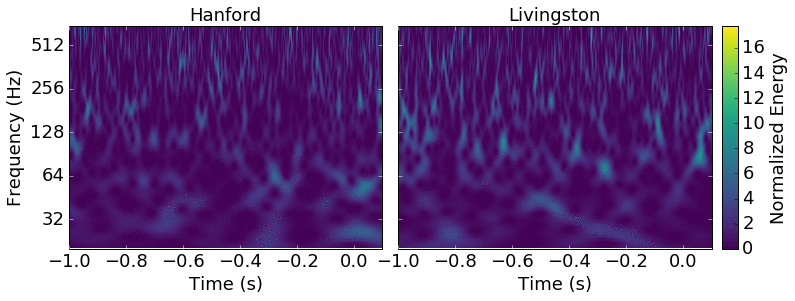
The LIGO Scientific Collaboration and the Virgo collaboration identify a second gravitational wave event in the data from Advanced LIGO detectors
On December 26, 2015 at 03:38:53 UTC, scientists observed gravitational waves — ripples in the fabric of spacetime — for the second time.
The gravitational waves were detected by both of the twin Laser Interferometer Gravitational-Wave Observatory (LIGO) detectors, located in Livingston, Louisiana, and Hanford, Washington, USA.
Gravitational waves carry information about their origins and about the nature of gravity that cannot otherwise be obtained, and physicists have concluded that these gravitational waves were produced during the final moments of the merger of two black holes — 14 and 8 times the mass of the sun—to produce a single, more massive spinning black hole that is 21 times the mass of the sun.
Because of their lighter masses compared to the first detection, they spent more time — about one second — in the sensitive band of the detectors. It is a promising start to mapping the populations of black holes in our universe.
During the merger, which occurred approximately 1.4 billion years ago, a quantity of energy roughly equivalent to the mass of the sun was converted into gravitational waves. The detected signal comes from the last 27 orbits of the black holes before their merger. Based on the arrival time of the signals — with the Livingston detector measuring the waves 1.1 milliseconds before the Hanford detector — the position of the source in the sky can be roughly determined.
Both recent discoveries, GW150914 and GW151226 were made possible by the enhanced capabilities of Advanced LIGO, a major upgrade that increases the sensitivity of the instruments compared to the first generation LIGO detectors, enabling a large increase in the volume of the universe probed. With detections of two strong events in the four months of our first observing run, the scientists can begin to make predictions about how often we might be hearing gravitational waves in the future.
Advanced LIGO’s next data-taking run will begin this fall. By then, further improvements in detector sensitivity are expected to allow LIGO to reach as much as 1.5 to 2 times more of the volume of the universe. The Virgo detector, the European interferometer, is expected to join in the latter half of the upcoming observing run. The network of three gravitational wave detectors will work together with ground-based telescopes that follow-up on the signals. Three interferometers together will permit a far better localization in the sky of the signals.
LIGO research is carried out by the LIGO Scientific Collaboration (LSC), a group of more than 1,000 scientists from universities around the United States and in 14 other countries. More than 90 universities and research institutes in the LSC develop detector technology and analyze data; approximately 250 students are strong contributing members of the collaboration. The LSC detector network includes the LIGO interferometers and the GEO600 detector.
Virgo research is carried out by the Virgo Collaboration, consisting of more than 250 physicists and engineers belonging to 19 different European research groups: 6 from Centre National de la Recherche Scientifique (CNRS) in France; 8 from the Istituto Nazionale di Fisica Nucleare (INFN) in Italy; 2 in The Netherlands with Nikhef; the MTA Wigner RCP in Hungary; the POLGRAW group in Poland and the European Gravitational Observatory (EGO), the laboratory hosting the Virgo detector near Pisa in Italy.






